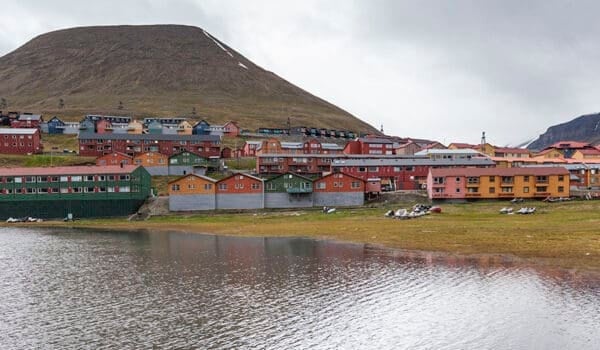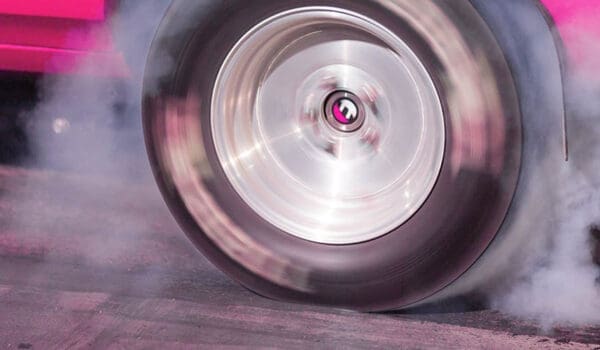Every time we wash our clothes, thousands of microfibers come loose from the garment. A single pair of jeans releases around 56,000 microfibers – per wash. A new study shows that small settlements in the Arctic are a major source of this type of man-made particles into the vulnerable environment.
The approximately 2,400 inhabitants of Longyearbyen release as many microfibers into the ocean each year as the 1.3 million who live in Vancouver, Canada.
The wastewater goes straight into the fjord
“That is not because the inhabitants of Svalbard wash their clothes differently than elsewhere”, explains senior scientist Dorte Herzke at NILU – Norwegian Institute for Air Research. “It is because in parts of Norway, especially in the north and on Svalbard, wastewater is released more or less untreated into the sea.”

Herzke, senior scientist Claudia Halsband from Akvaplan-niva, and Jan Sundet from the Institute of Marine Research in Tromsø looked at wastewater as a source of microfibers in a new study from the Advent fjord outside of Longyearbyen. Such fibers are up to 5 millimeters long and come from clothes made from both man-made fibers like acrylic and polyester, and natural fibers such as wool and cotton.
“A good amount of the microfibers that end up in the sea could also be from toilet paper and wet wipes”, says Sundet. “We wanted to limit ourselves to fibers from clothing, and thus we excluded white and transparent fibers from this study”.
How do microfibers move in the environment?
In the study, the scientists wanted to find out exactly how microfibers move when they are released into the fjord in the summer.
“Fortunately, we didn’t have to stand at the water’s edge and pour kilos of microfibers into the fjord”, says Halsband. “Instead, we put data on microfibers and the occurrence of aquatic and benthic organisms into a recognized and widely used hydrodynamic model that simulates ocean currents.”
The Advent fjord part of the model is newly developed by senior scientist Peygham Ghaffari at Akvaplan-niva.
Ghaffari had previously divided the microfibers into four different density classes: light, neutral, heavy and very heavy. In the model, the scientists could thus “see” how the different types of microfibers moved from the pipe where most of the wastewater from the homes in Longyearbyen is discharged, all the way to the fjord mouth and out of the fjord.
“As one would expect, the lightest microfibers which are mostly made of polyester, moved farther than the heavy wool fibers”, says Herzke. “We could also see that most of the fibers move up along the northern shoreline (west side) of the fjord. Light microfibers are carried out of the Advent fjord fairly quickly, within hours or days, while heavier fibers remain in the fjord and accumulate near the seabed.
Are the microfibers eaten?

Although a large part of the microfibers is carried quickly into the larger fjord system and from there out to sea, the supply of new microfibers is constant. This means that the scientists are also concerned about whether microfibers – as shown for other microplastics – are eaten by plankton, such as copepods, and other aquatic and benthic organisms.
“The model results show that there is great potential for the organisms to encounter microfibers in certain fjord areas, especially along the west side of the fjord. But so far there are few studies that show a clear interaction between microfibers and the organisms that live in the water and at the bottom of the fjord”, says Halsband.
She goes on to tell that a master student at Akvaplan-niva and NILU has exposed sea urchins to various types of microfibers in the laboratory. The student later found man-made fibers in the stomach contents of the sea urchins, and thus it is conceivable that other organisms such as copepods and benthic animals will also eat microfibers if they are available. Still, the scientists can’t state this with certainty without more specific studies.

Need for better infrastructure
All in all, data from the study show that each inhabitant of Longyearbyen annually releases approximately 7.5 million small microfibers out into the Advent fjord.
“As a private citizen, there is unfortunately little you can do”, says Dorte Herzke. “Of course it helps to air out wool clothes instead of washing them, and wear a pair of trousers a day or two longer before laundering them, but this issue is really about infrastructure”.
Because the technology able to remove large proportions of microfibers and microplastics already exists, and is used in water treatment plants in Vancouver and the major cities in Norway. On Svalbard, and in many other small and medium-sized cities around the country, however, such treatment technology is far from being introduced.
“We hope this study can help increase focus on the need for better infrastructure in small communities and vulnerable areas”, concludes Claudia Halsband. “The potential for damage to the Arctic environment is high”.
The study is financed with funds from the Svalbard Environmental Protection Fund and the Fram Centre’s research program “Plastic in the Arctic”. In addition, the scientists have received support from the Research Council of Norway (grants no. 117031, 275172 and 288079).





